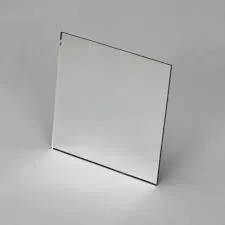

Exploring Grey Float Glass Characteristics and Applications
Grey float glass, a popular material in the construction and design industries, is known for its unique aesthetic appeal and functional qualities. It is a type of flat glass that is produced through the float glass process, where molten glass is poured onto a bed of molten tin. This method results in a smooth, even surface on both sides, making it an ideal choice for various applications.
One of the defining features of grey float glass is its distinctive color. The grey hue is achieved by adding specific amounts of iron oxide and other coloring agents during the melting process. This gives the glass a neutral tone that is versatile and can complement various architectural styles. Its subtlety enhances the overall design of buildings, while allowing for natural light to filter through without being overly bright. This characteristic makes grey float glass especially popular in commercial and residential projects alike.
In terms of performance, grey float glass offers numerous benefits. It provides good thermal insulation, which helps to maintain comfortable indoor temperatures and reduce energy consumption. Its reflective properties can also contribute to energy efficiency by minimizing heat gain from sunlight. Moreover, grey float glass has sound insulation qualities, making it suitable for urban environments where noise reduction is a priority.

Safety is another crucial aspect of grey float glass; when tempered or laminated, it can withstand significant impact and is less likely to shatter
. This makes it an excellent choice for building facades, windows, and doors, where safety and security are paramount. Additionally, its resistance to corrosion and environmental factors adds to its durability, ensuring longevity for structural applications.The aesthetic versatility of grey float glass extends to interior design as well. It can be used in furniture, shower doors, glass partitions, and decorative accents, contributing to a modern and sophisticated ambiance. Its ability to blend seamlessly with other materials, like wood and metal, makes it a favored choice among interior designers looking to create stylish yet functional spaces.
Environmentally, grey float glass is generally considered a sustainable option. It is recyclable, reducing the demand for raw materials and minimizing waste. Many manufacturers are committed to environmentally friendly practices, further enhancing the appeal of using float glass in construction and design.
In conclusion, grey float glass is an exceptional material that combines aesthetic appeal with practical benefits. Its unique color, durability, and energy-efficient properties make it an integral component in modern architecture and interior design. As the demand for sustainable and stylish materials continues to rise, grey float glass stands out as a reliable and attractive choice for a diverse range of applications. Whether used in sleek commercial buildings or elegant residential homes, grey float glass is sure to elevate the spaces it inhabits.